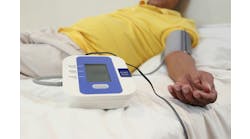Dallas-based Baylor Scott & White Health, one of the largest nonprofit healthcare systems in the country, is also one of the pioneers in deploying community health workers (CHWs). Two of its executives recently shared some lessons learned from the evolution of the CHW position in their organization.
In a recent webinar hosted by the National Center for Complex Health and Social Needs, Ashley Rodriguez, CHW system manager, and Karla Alvarado, CHW manager at Baylor Scott & White, described how the organization developed a workforce model that integrates CHWs into care teams and how the health system collaborates with community- and faith-based organizations.
Rodriguez said that often healthcare and community-based organizations think they know what a patient’s social determinant challenges are, but are not sure how to address them. “An ideal solution is community health workers, who are trusted community members with lived experience often reflecting the communities that we serve,” she said. Community health workers are known for inherit traits that can't be taught like personable engagement, adaptability, and resourcefulness, she said. “We're also known for what's sometimes referred to as the three E's — engaging, empowering and educating. In Texas, we're fortunate enough to have state certification for the role.”
She said that Baylor Scott & White has over a decade of experience deploying community health workers and now has 116 deployed across the health system, including more than a dozen supervisors in various departments. “The community health workers that we employ support complex, high-risk, high-needs patients, and some programs are directly supervised by experienced former community health workers.” Rodriguez’s role is to support all of these programs and departments as a system manager, and address any needs or barriers that they have.
One focus is to reduce emergency department admissions across the health system, but also helping new patients navigate through the healthcare system. “We also have dual-certified community health workers who are also certified pharmacy technicians, who can make sure that patients understand all of the information that was provided to them at the clinic or when they're being discharged from an emergency room visit,” she said. Some of their work involves providing a warm handoff, not only from a clinic or provider, but also to community-based resources and organizations that are providing direct services, she added.
Rodriguez chairs a Baylor Scott & White community health worker development council that was established in 2014, to help provide a support structure to all the departments and programs that are not centrally managed. “They really needed a mechanism to communicate what their needs were at a system level, and to also address how to integrate community health workers into the care team as we started to grow and expand the rolls,” she said. It allows leaders to come together to figure out what the best practices are. Much of the council’s work is dedicated to professional development, competency building and quality improvement. A career development subcommittee produces continuing education material for the workforce, and the best practices and program evaluations subcommittee conducts annual workforce surveys.
Alvarado, who began as a community health worker at Baylor Scott & White 10 years ago, said they began working on best practices because they wanted to retain their community health workers, in part by creating a career ladder. Initially, she said, there wasn’t much room to grow in the job description. “Today, we have five different community health worker job descriptions, and this gives the community health workers the ability to grow within the discipline.”
She reiterated that they want to hire people who have characteristics that cannot be taught. “I know I can teach anybody how to use an electronic medical record; I can teach them how to use a database, I can teach them how to pull data; I can teach them protocols and workflows, but I cannot teach them compassion. I cannot teach them sympathy.”
She explained another lesson learned is that they wanted to have a centralized management structure for the community health worker team. That protects the role of a community health worker, Alvarado explained. If they report to the clinic that they're embedded in, it is very easy for that clinic manager to pull the community health worker into other roles such as front desk person as needed. “Our community health workers are not receptionists; they are not the ones who are going to fill in in the clinic for anybody who's missing,” she said, “so you want to protect their role.”
Alvarado added that the community health workers document their work in the electronic health record.
Rodriguez and Alvarado also mentioned that Baylor Scott & White makes sure to recognize the contribution of CHWs. June 1st is community health worker day, and in the month of June they hold a CHW summit meeting.
During the webinar, the speakers were asked if the health system measured the impact of community health workers on outcomes. Rodriguez said because CHWs are so integrated into care teams with social workers, nurses and physicians, “it is very difficult to carve out any one outcome and attribute it to that community health worker who touched that patient, because it's a fully integrated care model. So as a health system, we actually don't look at the ROI. We have a lot of qualitative stories, but because we've been utilizing the role for so long, we don't have to justify it in any way at this point.”


